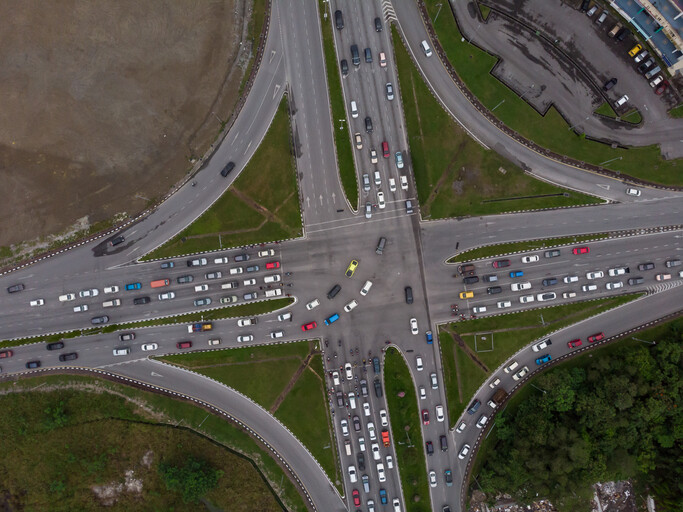The Intersection Of Civil Engineering And Virtual Reality

Have you ever heard about virtual reality being used in civil engineering? Yes, you read that right. The same technology which teleports you to another world can now help civil engineers to design better, faster, and more efficiently.
Introduction
Virtual reality is becoming increasingly popular in the construction industry, and civil engineering is no exception. With the help of virtual reality, engineers can create 3D models and simulate real-life scenarios, allowing them to better understand the design challenges and make more informed decisions. Virtual reality also enables collaboration with other stakeholders, such as architects, clients, and contractors, leading to better coordination and overall project success.
FAQ on Using Virtual Reality Technology in Civil Engineering
1. How does virtual reality technology work in civil engineering?
Virtual reality technology uses software and specialized hardware to create a 3D, computer-generated environment. In civil engineering, virtual reality can be used to create 3D models of buildings, bridges, and other infrastructure. Engineers can then use virtual reality headsets to explore, manipulate, and visualize these models in real time. This allows them to identify potential issues and make design changes in a more efficient and effective manner.
2. What are the benefits of using virtual reality in civil engineering?
There are many benefits of using virtual reality in civil engineering, including:
- Improved design visualization
- Better collaboration with stakeholders
- Increased safety
- Reduced costs
- Enhanced project efficiency
3. Are there any downsides to using virtual reality in civil engineering?
While virtual reality has many benefits, there are also some downsides to consider. For example, the cost of virtual reality technology can be prohibitive for smaller engineering firms. In addition, engineers may require additional training to use virtual reality effectively. Finally, some engineers may prefer traditional design processes and may be resistant to incorporating new technology into their workflow.
4. What types of civil engineering projects are best suited for virtual reality?
Virtual reality can be useful for a wide range of civil engineering projects, including:
- Building design and construction
- Bridge design and construction
- Road and highway design and construction
- Utility infrastructure design and construction
- Water and wastewater treatment plant design and construction
5. Is virtual reality technology widely used in civil engineering yet?
While virtual reality technology is still relatively new in the civil engineering field, it is rapidly gaining popularity. Many engineering firms are beginning to integrate virtual reality into their workflows, and industry experts predict that the use of virtual reality in civil engineering will become increasingly common in the coming years.
Advantages of Virtual Reality Technology in Civil Engineering
1. Improved Design Visualization
Virtual reality enables engineers to create 3D models of structures, allowing them to see how the finished product will look and how it will interact with the surrounding environment. This can help engineers to catch design flaws before construction begins and make design changes in a more efficient and effective manner.
2. Better Collaboration with Stakeholders
Virtual reality technology makes it easier for stakeholders, such as architects, clients, and contractors, to visualize the final product and provide feedback. This can lead to better collaboration and coordination, ultimately resulting in a more successful project.
3. Increased Safety
Virtual reality technology can be used to simulate hazardous scenarios, allowing engineers to identify potential safety risks before construction begins. This can help to reduce accidents and injuries on construction sites.
4. Reduced Costs
Virtual reality can help to reduce costs by catching design flaws early in the design process, before construction begins. This can help to avoid the need for expensive design changes later on. In addition, virtual reality can be used to simulate different scenarios and test different design solutions, helping engineers to find the most cost-effective option.
5. Enhanced Project Efficiency
Virtual reality technology can help to streamline the design and construction process, leading to increased efficiency. By catching design flaws early and enabling better collaboration, virtual reality can help to reduce project delays and ensure that projects are completed on time and within budget.
Conclusion
Virtual reality technology is revolutionizing the way civil engineers design and construct buildings, bridges, and other infrastructure. With the ability to create 3D models and simulate real-life scenarios, virtual reality is helping engineers to design better, faster, and more efficiently. While there are some downsides to consider, such as cost and training requirements, the benefits of virtual reality in civil engineering are clear. As the technology continues to develop, we can expect to see virtual reality becoming an increasingly common tool in the civil engineering field.


Post a Comment for "The Intersection Of Civil Engineering And Virtual Reality"